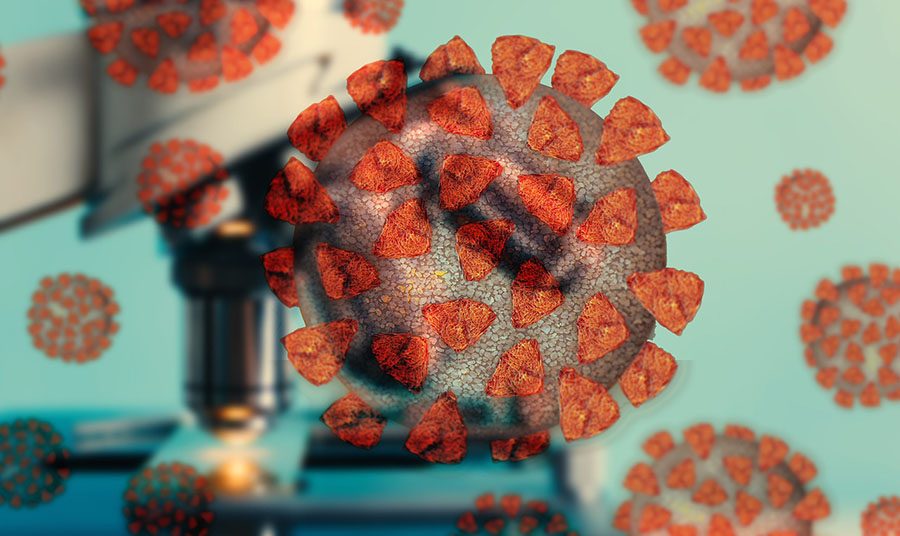The Life Sciences Report: Let's begin by talking generally about IMV Inc. (IMV:TSX; IMMVD:OTCQX). Can you describe your platform?
Fred Ors: What we have is a new way to deliver active ingredients to the immune system. Our technology has a unique mechanism of action that can be leveraged in different ways to enable the programming of immune cells in vivo. By doing this, we can potentially address many different diseases and markets by driving a T-cell or B-cell therapy, depending on the application.
As a company, we have decided the first application of this platform will focus on immuno-oncology. We are leveraging this unique mechanism of action to trigger the activation of T cells that can be programmed to look for targets unique to cancer cells, and not found in healthy cells. Those T cells would be generated in a high number in the blood of patients, and would be circulating and looking for that target. As soon as they find cells presenting the targets, the T cells will kill them.
TLSR: You have four active Phase 1 and Phase 2 trials in your pipeline addressing several indications. Could you describe these trials, and when you expect data to read out?
FO: Actually it's now four Phase 2s because we recently announced that the clinical trial with Incyte Corp. (INCY:NASDAQ) was extending into a Phase 2 trial. That trial is with our product DPX-Survivac in combination with Incyte's checkpoint inhibitor epacadostat. The application is in recurrent late-stage ovarian cancer, so in women who have failed all previous lines of therapy, and who have no option of further treatment. We released a first set of results for this trial in December, and have announced that we're going to provide an update at the annual American Society of Clinical Oncology (ASCO) meeting in Chicago. The presentation is on June 3.
We also have two ongoing clinical trials in collaboration with Merck & Co. Inc. (MRK:NYSE), in combination with Merck's checkpoint inhibitor Keytruda (pembrolizumab). We are in Phase 2 in two different indications: One is in recurrent ovarian cancer, the same indication as with Incyte. The other is a blood cancer called diffuse large B cell lymphoma (DLBCL). Both trials are ongoing. They were initiated in Q1/18. We expect to have some preliminary results on the signal of activity in those two indications around mid-year, and further results, including topline response rate, for both trials around the end of 2018 or beginning of 2019.
Finally, we have another ongoing Phase 2 with a different product, DPX-E7, which was developed by the Dana-Farber Cancer Institute. We are providing a delivery technology or platform in combination for this trial, which addresses all human papillomavirus (HPV) cancers. The trial is under the Dana-Farber Cancer Institute, and entirely funded by the Stand Up To Cancer and Farrah Fawcett Foundations. We hope to have some results to report before the end of the year on this trial as well.
TLSR: In April, IMV announced an expansion of its collaboration with Incyte in advanced ovarian cancer. What are the terms of this agreement? What does the partnership mean in terms of validation for the Depo-Vax platform, as well as DPX-Survivac?
Pierre Labbè: We are collaborating with Incyte on the clinical trial, sharing the costs 50/50, and Incyte is providing its drug for free. IMV is responsible for conducting the trial, but all the main decisions are made through a joint development committee with Incyte.
The expansion of the trial is significant, especially in the recent context of some recent results coming out regarding the combination of the Incyte drug with PD-1 checkpoint inhibitors. We believe these results reflect the overlapping mechanism that PD-1 and Incyte's epacadostat have, which might make it more difficult to show significant improvements. We have a mechanism of action that is completely different from checkpoint inhibitors. And we believe we have a higher chance to show a complementarity and synergy with epacadostat. I think the expansion is testimony to the value of the clinical data we have produced with Incyte, which we released in December and which are the best in the world in reference to ovarian cancer.
We are very excited about the expansion, because one of the goals is to study the complementarity between the two drugs. There are two arms to the trial, one being our drug as a monotherapy, and the other one being in combination with epacadostat, to access the benefit of the combination versus monotherapy. We are adding up to 32 patients to the study, which could bring the total number of patients up to 72 for this Phase 2 trial.
TLSR: Analysts have responded favorably to the news of the Incyte collaboration extension. Can you elaborate on how this affects IMV's bottom line and how it provides value to your shareholders?
FO: We strongly believe in our partners in these combination trials, and in the clinical strategies we have, whether with Incyte or with Merck. It's always good for us when analysts and our shareholders show appreciation for the strategy and are in agreement with management about the best ways forward, both for the company and for the technology, to continue to make progress in immuno-oncology.
TLSR: IMV also recently announced a consolidation of shares, as well as a name change and its intent to list on NASDAQ. Can you talk about what these changes mean for your company?
FO: They're all in the strategy together. The share consolidation is intended to meet the requirements of a NASDAQ listing. We targeted a US$5 stock price on NASDAQ, to be in the range of other companies in the same stage of development and in the same space. That's what was proposed to our shareholders. We were very happy to get 99.85% vote in favor of this move to the NASDAQ, including the share consolidation.
The name change is related but comes from a broader consideration. The company was created in 2000, and in the beginning it was more focused on animal vaccines. Along the road, we made some key discoveries about the technology and the mechanism of action, and that eventually transformed the company into what it is today—a company with a platform with a lot of potential applications and a very strong focus on immuno-oncology. The vaccine part will always remain a potential use of the platform, but it's no longer the focus of the company. The name change reflects what the company is doing today.
TLSR: Does IMV have other candidates or indications in preliminary study?
PL: In fact, we plan to announce a new clinical trial in the next couple of months. We are going to start a basket trial in three to five indications with our lead product, DPX-Survivac, in combination with a PD-1. At this stage, we cannot confirm with whom we are going to work. We plan to go into these three to five indications because our target, survivin, is overexpressed in more than 20 indications in cancer. We want to start to tag and dose those new indications. The goal is to demonstrate whether our platform, combined with our product, has potential in more than just ovarian cancer. If it does, we will be able to increase the value for our shareholders.
TLSR: Can you provide a bit more in-depth information about your platform?
FO: As I described, we have developed a unique mechanism of action to deliver active ingredients to the immune system. It doesn't release active ingredients that are entrapped in the formulation, which is very unusual for a delivery technology. With this mechanism of action, we actually enable the exclusive delivery of the active ingredients to the immune cells.
With our technology—when the formulation is injected under the skin—what happens is a release of the active ingredients at the site of injection. The antigen-presenting cells of the immune system are forced to come to the site of the injection and uptake by phagocytosis (eat) the content of the formulation. The active ingredients find themselves in antigen-presenting cells, the professional cells of the immune system in charge of bringing danger signals to the lymph nodes, which are the factories of the immune system. The targeted uptake of the product by immune cells, and its transport and delivery to the lymph nodes, is the mechanism of action we leverage.
What this mechanism of action allows us to do is program immune cells from in situ, in vivo—from inside of the body—rather than extracting cells outside of the body and programming them, and then reinjecting them, like other technologies are doing.
TLSR: It's an autologous therapy, where a person's own body is creating the therapy?
FO: Exactly. It's a new class of immunotherapy that is an alternative to adoptive cell transfer—such as chimeric antigen receptor T cells (CAR-T), dendritic cells and other technologies. One thing that's very important to us—and another reason we changed our name to IMV—is that sometimes our technology is mistaken for a vaccine technology. Actually, our mechanism of action is doing the opposite of what a vaccine is trying to do.
Vaccines need to release the active ingredient at the site of injection to mimic a bacterial or viral infection. That's how they work. They create an intense inflammatory response at the site of injection to trigger the immune system to create a huge response. This will typically peak at two months; after that, what is left is a memory response that can be recalled when the virus or bacteria shows itself again at the entry of the body. It's very unlikely, in our opinion, that the typical, natural, peak response of a vaccine is ever going to be strong enough to generate tumor regressions.
We believe the mechanism of action of a vaccine is not what's required. With cancer, we are not trying to prevent an acute infection that's coming from the outside. Cancer is a chronic disease that is inside the body and that has already been accepted, to some extent, by the immune system. We believe what is absolutely key in immuno-oncology is being able to generate T cells in a very high number and, more importantly, being able to sustain that T cell flow in the blood over a very long period of time. That type of T cell flow in the blood simply doesn't exist in nature, and thus cannot be created by vaccines. It has to be man-made, and this is exactly what we are designing specifically for cancer, to enable the killing of solid tumors that can be quite large. To do that, we believe you need T cells in the blood for at least a year, and probably longer. As far as we know, we are the only company in the world that has demonstrated this.
TLSR: Would you anticipate then, that treatment with DPX-Survivac would be ongoing for a year or more? And if the cancer reappears after treatment has concluded, would the patient go back in for additional treatment?
FO: If you look at Keytruda (pembrolizumab) and Opdivo (nivolumab), the two blockbuster immunotherapy drugs on the market, the duration of treatment is between one and two years. These drugs have already proven what we are saying about the duration of treatment, because the immune system requires time to enable a cure or tumor regression. It's not like chemotherapy, which happens instantly. You need to let time pass to make those responses happen.
What's unique to immunotherapy is that when responses happen, as with Keytruda and Opdivo, the duration of those responses, in most cases, is very long in comparison to chemotherapy or other drugs used in oncology. The duration of the response is really the hallmark of immunotherapy.
PL: We anticipate it's going to be the same for DPX-Survivac because we are using a mechanism of action that's based on the immune system and T cells, like Keytruda and Opdivo are.
And to clarify: The problem with vaccine technologies is that, again, they create a response. We don't really create a response. Our technology is more like drug delivery into the lymph nodes, where we can activate T cells. And because the components we are using only activate T cells against the target, and nothing else, we can reinject every two months. So every two months we reload the active ingredients into the lymph nodes, which is more like a drug treatment.
Vaccines cannot be reinjected over time because they create an inflammation response, a very broad response against all the components you place in the vaccine. Vaccines use viral vectors, bacterial vectors, and all kind of adjuvants to boost the immune response, and those additional elements create their own immune responses. That's why you cannot reinject a vaccine every two months or three months, and that's a big limitation of the vaccination approach. We can continue to reload the active ingredients into the lymph nodes for more than one year, two years or three years if there's a need to.
TLSR: What can investors expect to see over the remainder of 2018? Is there anything beyond the data readouts you've mentioned that readers should be looking for?
PL: First, in our corporate presentation, we have a nice table of the milestones we expect between now and the end of the year. The first is the clinical data we are going to disclose and present at ASCO at the beginning of June.
In the Phase 2 trial with Incyte, we will give an update on clinical data in the fall.
In the two clinical trials with Merck in ovarian cancer and DLBCL, we should have preliminary data in the next few months, around mid-year. And we should have topline data in those trials around the end of 2018 or beginning of 2019.
We will announce initiation of the basket trial in the next few months—the indication and the partner. We expect to have preliminary data around the end of 2018, beginning of 2019.
We have many milestones in the next nine to 12 months. And that was the main reason behind the NASDAQ listing—the fact that, in the coming months, we will have a lot of news.
TLSR: Fred and Pierre, thank you for your time.
Want to read more Life Sciences Report interviews like this? Sign up for our free e-newsletter, and you'll learn when new articles have been published. To see recent articles and interviews with industry analysts and commentators, visit our Streetwise Interviews page.
Disclosure:
1) Tracy Salcedo conducted this interview for Streetwise Reports LLC and provides services to Streetwise Reports as an independent contractor. She owns, or her family owns, securities of the following companies mentioned in this interview: None. She is, or members of her immediate household or family are, paid by the following companies mentioned in this article: None.
2) IMV Inc. is a billboard sponsor of Streetwise Reports. Click here for important disclaimers. The information provided above is for informational purposes only and is not a recommendation to buy or sell any security.
3) Fred Ors and Pierre Labbe had final approval of the content and are wholly responsible for the validity of the statements. Opinions expressed are the opinions of interviewees and not of Streetwise Reports or its officers.
4) Fred Ors: I was not paid by Streetwise Reports to participate in this management interview. I had the opportunity to review this for accuracy and am responsible for the content. I or my family own shares of the following companies mentioned in this discussion: IMV Inc.
5) Pierre Labbe: I was not paid by Streetwise Reports to participate in this management interview. I had the opportunity to review this for accuracy and am responsible for the content. I or my family own shares of the following companies mentioned in this discussion: IMV Inc.
6) Discussions are edited for clarity. Streetwise Reports does not make editorial comments or change experts' statements without their consent.
7) The discussion does not constitute investment advice. Each reader is encouraged to consult with his or her individual financial professional and any action a reader takes as a result of information presented here is his or her own responsibility. By opening this page, each reader accepts and agrees to Streetwise Reports' terms of use and full legal disclaimer. This discussion is not a solicitation for investment. Streetwise Reports does not render general or specific investment advice and the information on Streetwise Reports should not be considered a recommendation to buy or sell any security. Streetwise Reports does not endorse or recommend the business, products, services or securities of any company mentioned on Streetwise Reports.
8) From time to time, Streetwise Reports LLC and its directors, officers, employees or members of their families, as well as persons interviewed for articles and interviews on the site, may have a long or short position in securities mentioned. Directors, officers, employees or members of their immediate families are prohibited from making purchases and/or sales of those securities in the open market or otherwise from the time of the interview or the decision to write an article, until one week after the publication of the interview or article.



























































